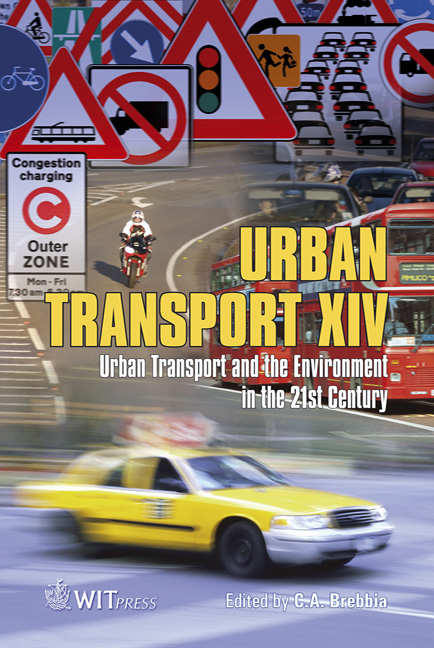Dynamic Simulation Of Tram–train Vehicles On Railway Track
Price
Free (open access)
Transaction
Volume
101
Pages
11
Page Range
491 - 501
Published
2008
Size
656 kb
Paper DOI
10.2495/UT080481
Copyright
WIT Press
Author(s)
M. Bruner & L. Rizzetto
Abstract
\“Tram–train” systems carry out the integration of an urban tramway with the surrounding railway network, by means of light rail vehicles often provided with special wheel profiles in order to fit both grooved and flat-bottomed rails. This paper aims to compare the dynamic behaviour of a typical Light Rail Vehicle (LRV) provided with these \“tram–train” wheel profiles with the dynamics of the same LRV provided with an heavy railway standard wheel profile by modelling, in a multi-body simulation environment, the run on railway tracks of a virtual vehicle provided with these two wheel profiles. Keywords: tram–train, safety, track compatibility, wheel–rail interaction, multibody simulation. 1 Introduction The \“tram–train” is a typical example of interoperable public transport system, which allows to join city centres with suburban areas, while eliminating the necessity to change transport system and the respective waiting times, by means of urban rail vehicles adapted (e.g. Karlsruhe trams) or specifically designed (e.g. Kassel RegioCitadis LRV’s) to operate both on tramway infrastructures (tramway lines or light subway lines) and on conventional railway lines. On the other hand adapting a tramway vehicle to operate on these two different existing infrastructures requires overcoming some technical barriers (Malavasi et al. [1]). In particular the main geometrical issue arises from the different wheel–rail interaction between tramway, which uses grooved rails, and heavy railway where flat-bottomed (Vignole) rails with a slight inclination (1/40
Keywords
tram–train, safety, track compatibility, wheel–rail interaction, multibody simulation.





